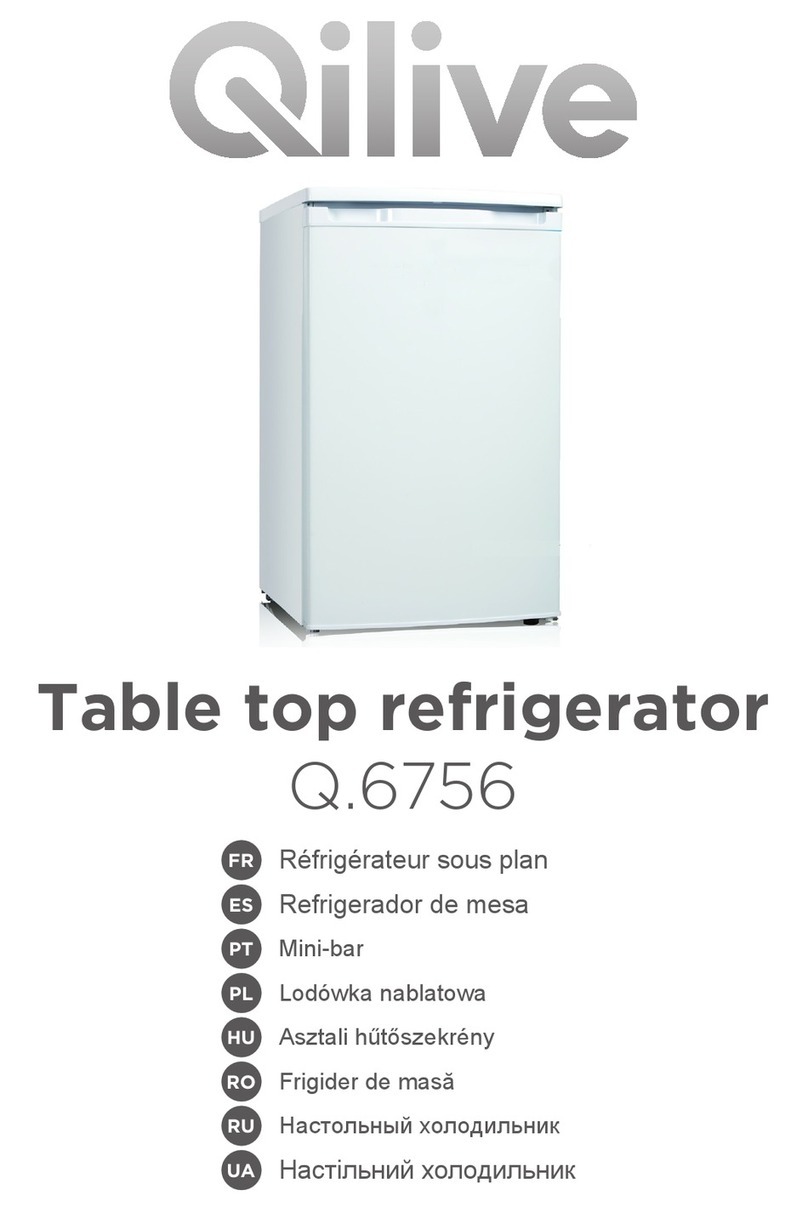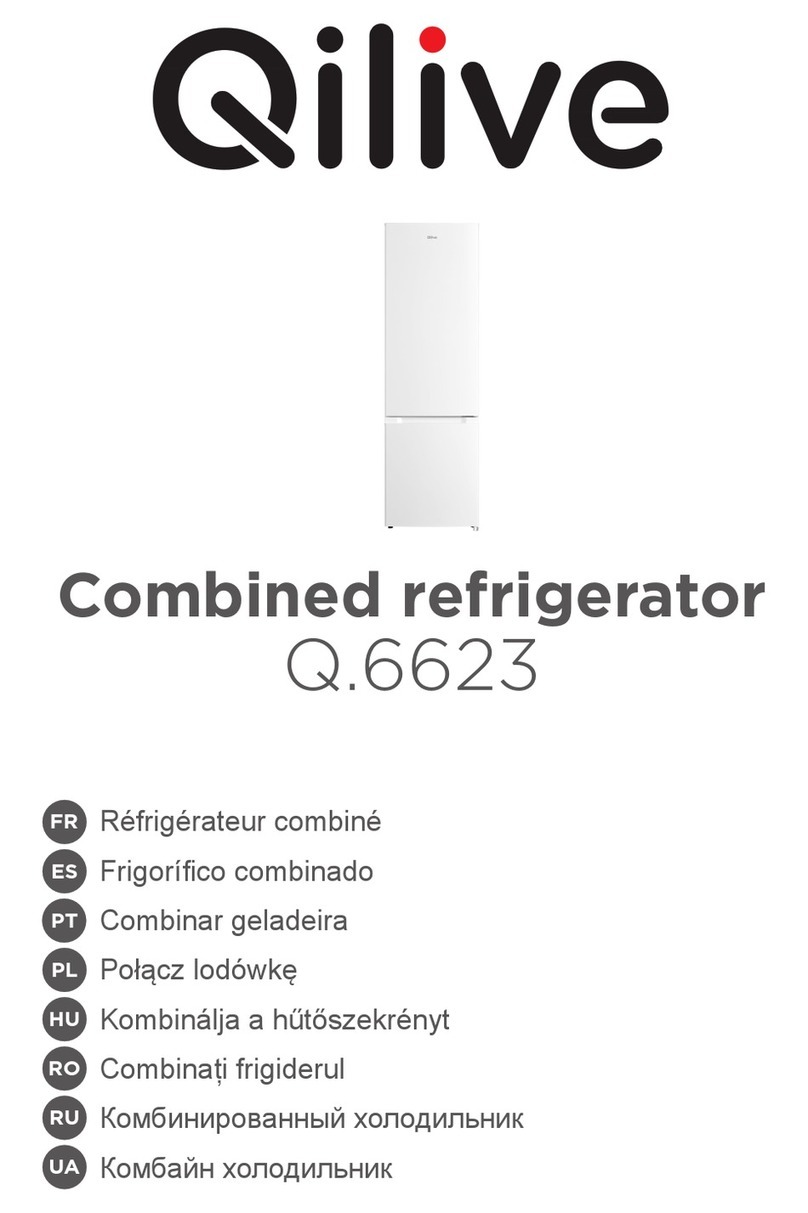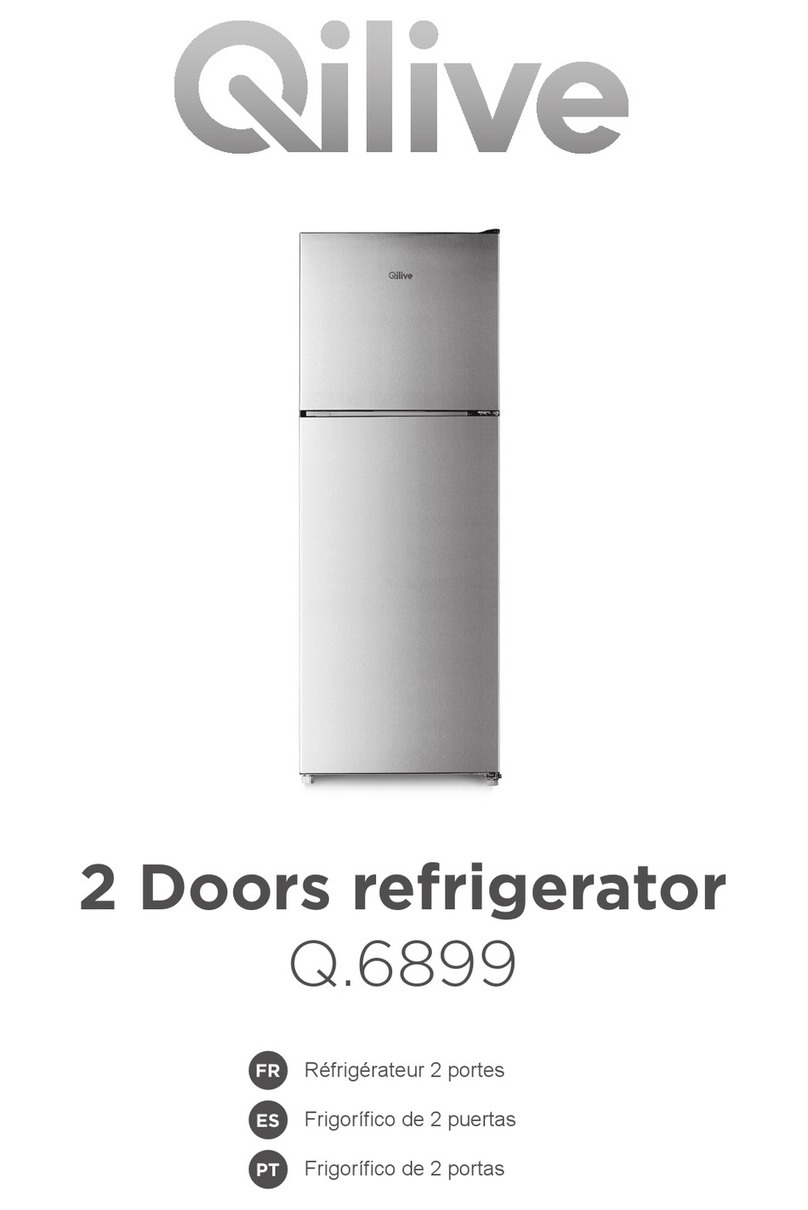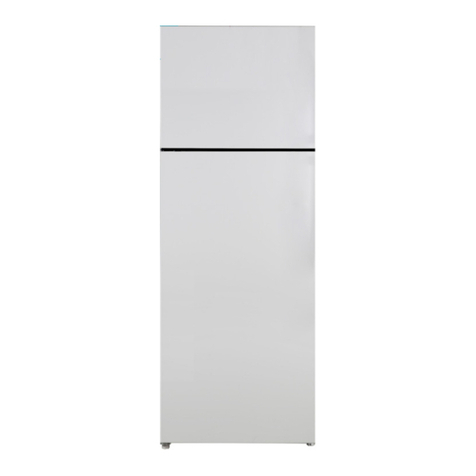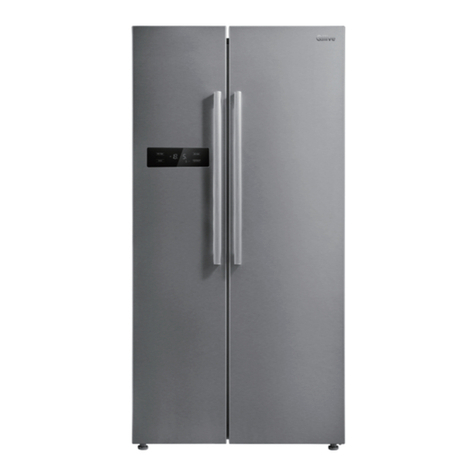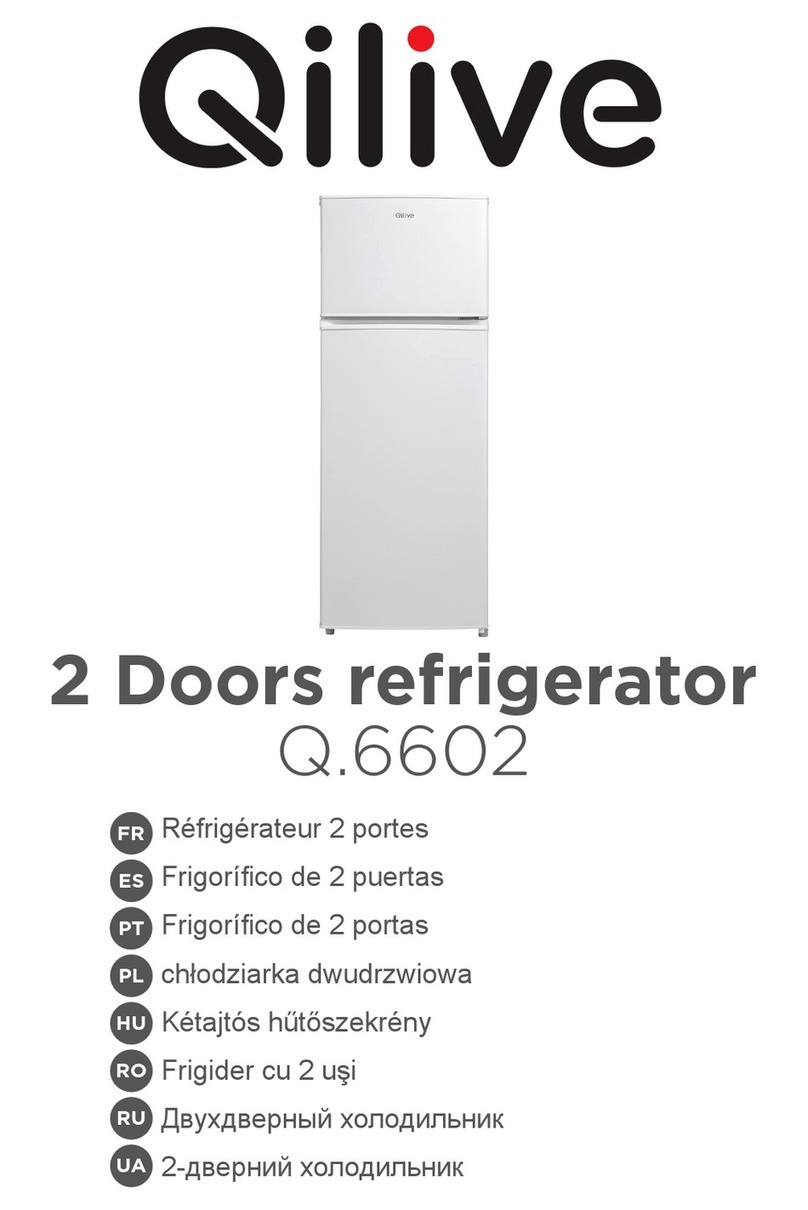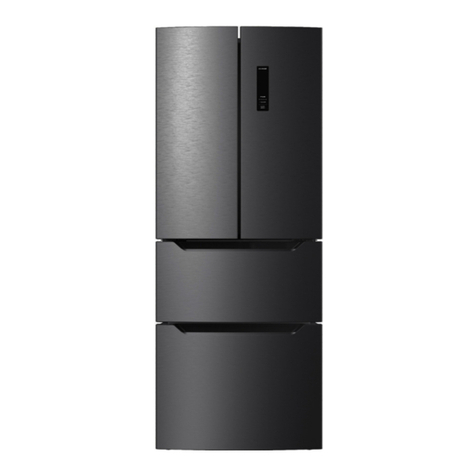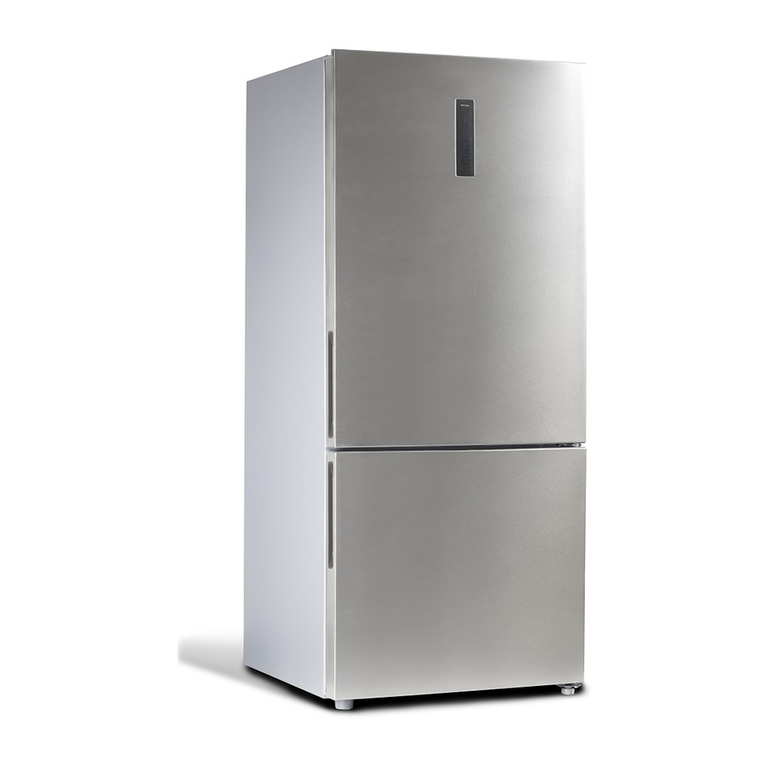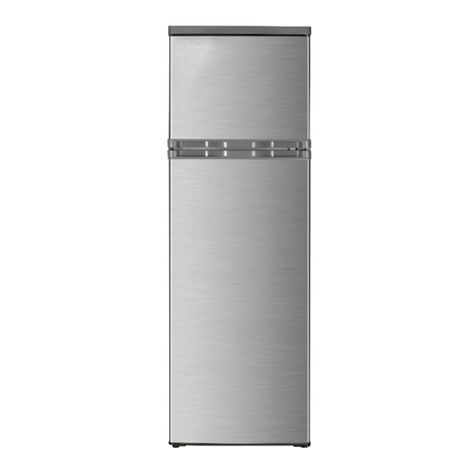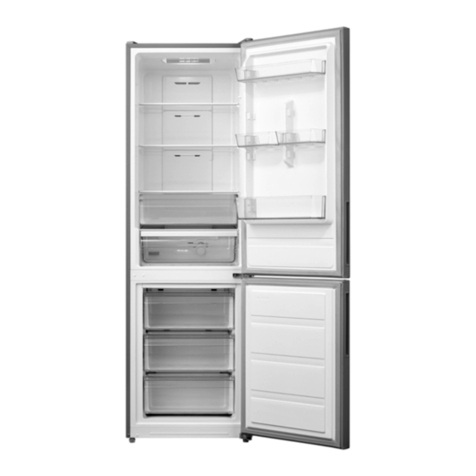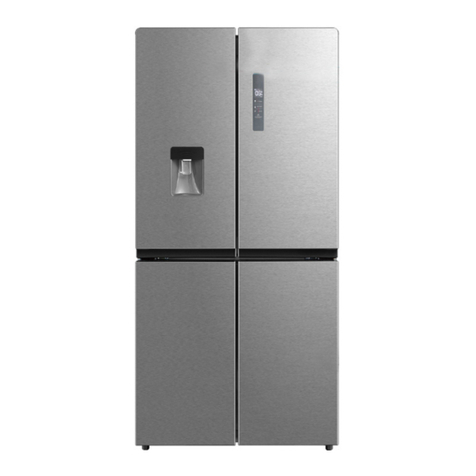
9
28.WARNING: When positioning the appliance, ensure
the supply cord is not trapped or damaged.
29.To avoid contamination of food, please respect the
following instructions:
– Opening the door for long periods can cause
a signicant increase of the temperature in the
compartments of the appliance.
– Clean regularly surfaces that can come in contact
with food and accessible drainage systems.
– Store raw meat and sh in suitable containers in the
refrigerator, so that it is not in contact with or drip onto
other food.
– One , two and three-star compartments
are not suitable for the freezing of fresh food.*
– If the refrigerating appliance is left empty for long
periods, switch o, defrost, clean, dry, and leave the
door open to prevent mould developing within the
appliance.
*Note: Please conrm whether this is applicable according
to your product compartment type.
30.The refrigerator must be disconnected from the source
of electricity supply before attempting the installation of
any accessories.
31.The refrigerant and cyclopentane foaming material
used for the appliance are ammable. Therefore, when
the appliance is disposed of, keep it away from any
sources of re. The appliance should be recovered by a
specialized company with the corresponding qualication
and not disposed of by combustion, so as to prevent
damage to the environment or any other harm.
32.Any replacement or maintenance of the LED lamps is
intended to be performed by the manufacturer, its service
agents, or similarly qualied individuals.
33.The gap between the refrigerator door and the cabinet
is small, to prevent squeezing your ngers, do not put

